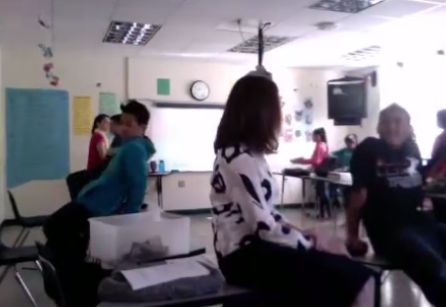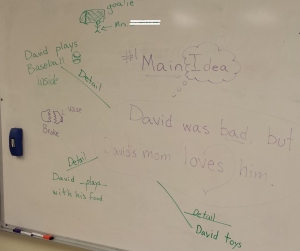Ahh! Grammar! I know, and you, fair reader, probably know, that teaching grammar directly, especially to English language learners is a somewhat fruitless endeavor. The SLA king, Dr. Stephen Krashen, and many others have refined the concepts that essentially discourage direct instruction of grammar, both because it is largely less effective than natural acquisition of grammar through exposure and because it discourages students to produce language. Hearken back to the days of old -- that high school Spanish classroom where you stared at half a dozen conjugation charts and fought the would-be urge to participate because you couldn't keep all of the rules straight enough to avoid making a mistake!
As a (probably conditioned) supporter of these natural order SLA theories, I hesitated to construct a lesson for my practicum this week. My cooperating instructor suggested I teach a lesson about prepositions (quick Google search to remind myself about this grammar concept that someone labeled) because many of the newcomer students in the classroom had been running into vocabulary blockages when they spoke and wrote. Challenge accepted. I knew I could use my background knowledge of the newcomer middle schoolers in the classroom and make an engaging lesson.
Background knowledge: I have been working with these students since January and I've noticed some gaps in their use of prepositions (under, on, in, over, around, etc). In preparation for my lesson and in an effort to highlight student choice, I asked them about their favorite English songs. That was a fun few minutes where these students who constantly have a huge cognitive language load weighing on them got to relax for a moment and engage with their teachers about what they enjoy.
The lesson: I started the lesson by playing the first verse of
Avicii's "Wake Me Up." Listen to the lyrics and let it blow your mind to discover: it's about prepositions ( ;) ). We have to know
where to start, I told them. We were going to talk about, read about, speak about, and listen about words we use to tell people WHERE something is.

We spent a few minutes doing some Total Physical Response exercises to act out the target words. Note: middle schoolers like sitting "on top of" their desks.
I printed out and laminated about twenty common prepositions, especially those used in the songs they told me they liked. I also laminated a picture of John Legend and one of Shakira, allowing students to use these pictures to employ some of the prepositions they knew. "Shakira is on the desk; Shakira is under the desk; John Legend is between Ali and Victoria (pseudonyms)."
That gave me a good idea of their grasp of the concept. The next activity involved a simple "word hunt" wherein partners looked through the lyrics of songs I printed out and found the prepositions. Again, I had the words on display, with picture supports, and they had already acted out several of them in the TPR part of the lesson.
I had a few of them share their discoveries and, to my delight, they all really did their work and some felt comfortable enough to sing the parts of the songs they found. The next step was creation. They voted and decided they wanted to write a song about Shakira instead of John Legend, to my dismay. I asked them to partner up again, to come choose three of the laminated prepositions I brought and one or two magazine pictures that I cut out to serve as inspiration for their song. They were to use the pictures and the prepositions to write part of a song "that we were going to create together," though that didn't actually happen. Rhyming and song-writing are for a different day...
Over all, it was a successful lesson. The students shared their work and a lot of it was really insightful. They were able to use the prepositions in literal and figurative manners, which made my English major heart flutter. My CI and the TA both said how successful they thought the lesson was and one of the toughest cookies in the room kept asking if "we can do this everyday." That is particularly touching to me because one of his biggest struggles is writing.
I was meant to be an ESOL teacher. I'm still learning how to climb this mountain and how best to approach these challenges, but man, do I love it in the meantime!


